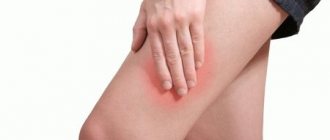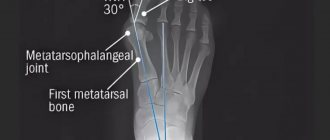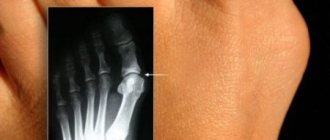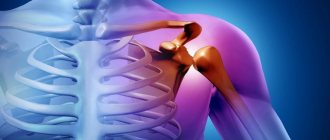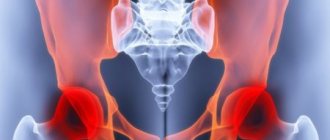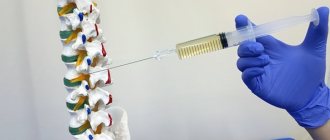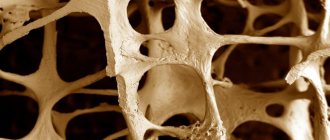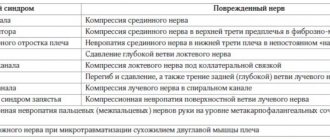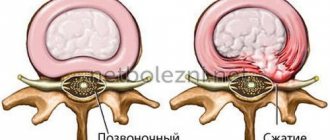A cramp is a sudden, involuntary, often painful contraction of a muscle. This happens to everyone from time to time: at night during sleep, during physical activity, and sometimes at rest. Spasm can occur in any part of the body - in the limbs, in the side, in the buttock, in the abdomen.
Often people have no idea why their muscles cramp. However, it is very important to find out the reasons for this, because a seizure can be both a physiological norm and a symptom of a serious disease. Let's look at this in detail.
Night cramps and their causes
Cramps are defined as sharp, painful sensations in the muscles that can last from a couple of seconds to several minutes. Most often, cramps occur in the calf area, much less often in the area of the lower leg, thigh, and knee. No less often than in the calf, it cramps the toes and feet. It feels like during such pain the leg seems to be twisted and tightly tightened.
Advertising:
Cramps during sleep in women occur for a number of reasons, all of which are significant and, if pain occurs regularly, require medical attention:
- Blood electrolyte disorders
. Spasms occur if the body lacks vitamins and minerals, especially magnesium, calcium, potassium, and vitamin D. This condition can be provoked by excessive sports, kidney disease, endocrine disorders, and in men, heavy physical labor. Due to a lack of essential elements, spasms can appear during sex, when stretching, or walking. - Circulatory problems
. Atherosclerosis of blood vessels, varicose veins, and thrombophlebitis cause a decrease in the supply of oxygen to tissues, which is manifested by night cramps. In pregnant women, obstruction of blood flow in the arms and legs is often observed due to an uncomfortable sleeping position. - Neurological diseases
. Past infections, neuroses, exhaustion, nervous fatigue and other pathologies can lead to disruptions in neuromuscular conduction. Among the serious causes of this group are Parkinson's disease, compression of the spinal cord.
More often, nighttime muscle spasms are observed in people over 50 years of age, but sometimes they occur even in children. Sometimes the cause of seizures is trivial - taking certain medications (for blood pressure, hormones, statins, diuretics).
Modern women usually ignore the manifestation of chronic fatigue due to a stressful and accelerated lifestyle. Prevention at home is a preventive measure that helps avoid the risk of transforming a mild neurosis into a serious illness. Read more in the article: “neurasthenia in women.”
Why do muscles cramp?
The reasons can be divided into two groups. The first includes those that do not have any underlying diseases. So, if the calf or gluteal muscles cramp in a dream, there is no physiological pathology in this. The seizure in this case is a parasomnia, that is, a phenomenon associated with sleep. Spasms that occur during increased physical activity also do not indicate an abnormality.
In other cases, such discomfort may be caused by:
- neurological disorders;
- compaction of muscle fibers against the background of physical inactivity;
- metabolic disorders;
- micronutrient deficiency;
- dehydration;
- poisoning (including cramps from a hangover).
There is also a disease called hypoparathyroidism. It is characterized by a convulsive syndrome that immediately affects muscle groups. This condition is caused by hypofunction of the parathyroid glands.
Causes of tetany
Tetany (spasm) is an involuntary, uncontrolled contraction of muscles (one or several at a time), during which a person feels a sharp squeezing pain. Depending on the mechanism of occurrence, leg cramps at night can be either long-term or short-term. Their characteristic feature is their abrupt appearance. It is impossible to predict the approaching attack of cramps: a person simply wakes up from a sharp pain in the muscles of the legs.
The most common form of nighttime leg cramps is cramping in the calf muscles, known as cramping syndrome. The main reasons why legs cramp at night:
- Stagnation of blood in the veins of the lower extremities. Varicose veins are a common problem affecting up to 30% of the population in developed countries. Due to improper functioning of the venous valves, blood stagnation occurs, which worsens at night. With the help of cramps, the body tries to normalize blood flow.
- Lack of microelements. Blood electrolytes (particles with a positive and negative charge) have the ability to conduct electrical charges, ensuring the transport of nutrients and maintaining optimal water-salt balance in the body. With a deficiency of magnesium, sodium, potassium and calcium in the body, this balance is disrupted.
If you regularly encounter this problem, do not expect it to go away on its own. Remember that cramps in the calves at night can be a sign of serious diseases, for the diagnosis of which you need to consult a specialist.
The problem of loss of tone in the intimate muscles after childbirth is observed in many women. In addition to performing special gymnastics, there are a number of external medications for narrowing the walls of the vagina. Read more in the article: “gel for narrowing the vagina.”
What is muscle spasm, its types and causes
Muscle tissue is located in all parts of the body, its function is to provide movement. Contractions of skeletal muscles provide movement of the body, and contractions of internal muscles move organs - the heart and blood vessels, the digestive tract, the respiratory and genitourinary systems.
Normally, the process of muscle contraction is regulated by the central nervous system with the participation of the human volitional factor. For example, when food enters the stomach, peristalsis increases, or when exposed to a painful factor, the hand involuntarily withdraws. Contractions by willpower are walking, doing physical exercises, or any type of activity.
When individual muscle groups contract unnecessarily, arbitrarily and for no apparent reason - this is a muscle spasm, it is accompanied by pain. Its reasons, although not always visible, are always there, and there are many of them:
- various injuries that cause pain;
- prolonged forced, uncomfortable position of the body, leading to overstrain of some muscles and inaction of others;
- excessive physical activity;
- immobility, lack of movement;
- circulatory disorders - with varicose veins, atherosclerosis of the vessels of the extremities;
- metabolic disorders – with diabetes, thyroid diseases;
- water-salt balance disorder;
- pathology of the spine with pinched nerve fibers;
- diseases of the nervous system;
- diseases of the abdominal organs;
- stress, adrenaline rush;
- high body temperature.
You can independently determine the cause of a muscle spasm only in simple cases when it is obvious, for example, during training or after an uncomfortable body position. In other cases, it is better to consult a doctor.
Important: the cause of abdominal muscle spasms, as well as intra-abdominal spasms, can be serious diseases of the internal organs, so consulting a doctor is mandatory.
Other causes of cramps in women
Unpleasant phenomena that occur in the pool are often associated with swimming in cold water, too intense exercise for beginners, or the use of incorrect swimming techniques. Legs that hurt and go numb during long walks or climbing mountains usually occur in unprepared people who have not calculated the normal load on the muscles. During pregnancy, the cause of daytime cramps can be:
Advertising:
- increased fetal weight;
- compression of the pelvic veins and peritoneum by the fetus;
- deficiency of calcium and magnesium.
In women, excessive sweating can provoke muscle spasms, because it causes the removal of potassium from the body. If the problem appeared after an injury to the left or right leg and is observed constantly, there may be damage to the nerve roots. Young girls often begin to twist their legs when following strict diets, against the background of prolonged stress, or with too heavy menstruation.
The causes of muscle spasms, depending on the location, can be as follows:
| Place of occurrence of cramp | Possible reasons |
| Toes | Ligament diseases, diabetes mellitus, flat feet, obliterating endarteritis, smoking, alcoholism, wearing uncomfortable shoes |
| Foot | The same reasons as in the previous paragraph, pinched nerve roots, arthrosis of the ankle joint |
| Calf muscle | Kidney and liver failure, varicose veins, diseases of the adrenal glands, thyroid gland, electrolyte imbalance, dehydration |
| Thigh muscles | Spinal diseases, injuries and diseases of the hip joint, hormonal disorders, hypervitaminosis |
Advertising:
Taking hormonal contraceptives, constantly wearing high-heeled shoes, and being overweight also greatly increase the risk of cramps at night, in the morning, or during the day.
Prevention
The best prevention of involuntary muscle contractions is moderate physical activity. Regular exercise helps keep your muscles under control. The tissues will not suffer from physical inactivity or sudden overload. This is equally beneficial for both men and women at any age.
A set of exercises to prevent cramps always includes stretching. It is useful to do it before bed so that unpleasant symptoms do not occur at rest.
Since muscles often cramp due to hypovitaminosis and lack of microelements, it is important to eat a balanced diet. If you cannot get them in sufficient quantities from food, you should additionally take vitamins B and E, as well as magnesium, calcium and potassium supplements. It is also important to drink enough fluids, because similar discomfort occurs due to dehydration.
How to treat seizures?
Sometimes, if the legs cramp, the reasons are obvious, and treatment for women includes the simplest measures: normalizing nutrition, daily and sleep patterns, and taking vitamins. In general, organizing proper nutrition is necessary for any type of muscle spasms, because only with a balanced diet will all the necessary substances enter the body.
You should eat more dairy products, buckwheat, almonds and other nuts - sources of calcium.
Other healthy foods for the body include apples, any greens, broccoli, and citrus fruits.
Fish, cod liver, eggs, and avocados are very healthy.
Smoking, excessive coffee and black tea should be avoided. Other tips to reduce the likelihood of seizures:
- sleep with your legs slightly elevated;
- when walking, do not put too much strain on your legs;
- choose only comfortable shoes, not tight underwear;
- wear special insoles.
If simple measures do not help treat the unpleasant symptoms that appear, you need to consult a doctor and get diagnosed. It may be necessary to treat the underlying disease that caused the problems. You also need to know first aid methods when pain occurs. Massage, rubbing, pinching the skin and muscles will help cope with a cramp in the upper or lower limb - such actions will restore blood circulation to the tissues.
Who usually experiences muscle cramps?
This trouble is familiar to everyone: men and women, children and the elderly, athletes and office workers. Only some people get to know her for natural reasons and rarely encounter her, while for others she becomes a frequent companion.
The risk group includes:
- children under 3 years of age who have experienced a rise in temperature above 38 degrees;
- elderly people suffering from vascular diseases and muscle atrophy;
- men engaged in heavy physical labor;
- athletes (football players, swimmers, runners);
- people who abuse alcohol and often experience hangovers;
Predisposes to muscle spasms and pregnancy. In mild cases, they are caused by a lack of vitamins due to changes in the body; in severe cases, they are caused by eclampsia.
What to do if your legs cramp?
There are some current tips on what to do when you have leg cramps. You need to do the following:
- Perform an intensive massage of the tense area.
- Apply a cold compress.
First aid for leg cramps is to stretch the affected area:
- feet, calves: while sitting, straighten your lower limbs, pull your big toes towards you;
- anterior femoral part: standing, bend the limb at the knee, clasp the ankle with your hands, pull the foot towards the buttocks;
- back of the thighs: put the affected leg forward, place it on the heel, bend the other limb at the knee and lean on it with your hands, carefully stretch the contracted limb, moving the pelvic part back.
Before treating leg cramps, you must find out the reasons for their occurrence. You should not self-medicate, you should consult a doctor. First, you need to be examined by a therapist, who will give you a referral to a specialized specialist. If seizures are caused by varicose veins, then treatment will be carried out by a phlebologist, damage to the arteries - by a vascular surgeon, diabetes - by an endocrinologist, and radiculitis - by a neurologist. Find out what to do if you are diagnosed with varicose veins of the lower extremities.
Exercises to prevent seizures
To avoid leg cramps at night, you need to do the following exercises before going to bed:
- Stand on your heels and stand there for 20 seconds.
- Spread your heels apart and point your toes together. Stay like this for another 20 seconds.
- Place your heels together and point your toes in different directions. Stand in this position for 20 minutes.
- Sit on a chair and quickly bend and straighten your toes.
- Stand up and walk on the outside and inside of your feet.
- Sit on a chair and try to write numbers from one to ten in the air with your feet.
- Sit on the floor, bend your knees and pull your toes towards you. During the exercise, you need to feel how the calf muscle stretches. You need to perform the exercise 3 times for 10 seconds each.
- Stand on your toes, stretch your arms up, and lower yourself onto your heels. Perform the exercise 5 times for 10 seconds.
- Stand up, tilt your torso forward, touch your toes, but keep your heels pressed to the floor. Repeat the exercise 6 times for 10 seconds.
Tablets and injections for seizures
Most often, painful muscle spasms are eliminated with a course of taking magnesium, potassium and calcium supplements. These include the following:
Advertising:
- Calcium D3 Nycomed;
- Complivit Calcium;
- Magnelis B6;
- Magne B6;
- Magnerot;
- Asparkam.
The course of treatment is 1-2 months, usually during this period of time the symptoms subside. During pregnancy, complex medications are prescribed that contain all vitamins and minerals in increased quantities, always with folic acid.
If muscle spasms are caused by a disease, etiotropic therapy is carried out aimed at eliminating the cause.
Nervous diseases and stress that provoke phenomena in the legs are treated by taking antipsychotics, tranquilizers, and sedatives. Varicose veins are treated by taking Phlebodia, Troxerutin, Detralex and other venotonics. The traumatic nature of spasms necessitates courses of massage and manual therapy to relieve compression of the nerve roots. At the same time, non-steroidal anti-inflammatory drugs are given in injections or tablets.
Drug treatment for muscle spasms
The following groups of drugs are used to relax muscles and relieve pain:
- Muscle relaxants: “Notrixum”, “Atracurium-Novo”, “Flexeril” and others. They are used only for skeletal muscle spasms, as prescribed and under the supervision of a physician.
- Antispasmodics: “Antispasmodik”, “No-shpa”, “Papaverine”, “Spazmobrew” and others. They eliminate spasms of the smooth muscles of internal organs.
- The NSAID group is non-steroidal anti-inflammatory drugs with an analgesic effect: Ibuprofen, Naproxen, Diclofenac, Ketanov, Voltaren, Piroxicam and others.
Despite the fact that all of these drugs are sold without a prescription, it is better if they are prescribed by a doctor. For cramps and abdominal pain, you should not take painkillers until examined by a doctor; only antispasmodics are allowed. Another drug that deserves attention is Papaverine.
Local treatment and exercises
Ointments and creams are used mainly for the vascular nature of symptoms. If varicose veins are diagnosed, the following ointments should be applied to the legs twice a day:
- Aesculus;
- Troxevasin;
- Heparin.
The frequency and strength of spastic contractions after starting to use such drugs quickly decreases, pain and swelling disappear, because the flow of blood and lymph is activated. To massage the calves or other muscles, you can use homeopathic Traumeel ointment - after a month of use, you can notice a significant improvement in blood circulation in the extremities.
You can prevent a seizure attack with special exercises if you notice its approach in time.
To combat spasms, you need to lie on the bed, stretch strongly, and point the toes of your feet towards you. The muscles should be tense during this exercise. You can also stand on your toes, then suddenly roll over onto your heels, this will also help against an attack.
Why do leg cramps occur?
Some thyroid diseases can lead to seizures.
There are actually many causes of seizures - from banal malnutrition to serious, life-threatening diseases. The vast majority of leg cramps are caused by the causes listed below.
- Imbalance of vitamins and microelements in the body:
- magnesium deficiency is the cause of ¾ of all cases of leg cramps;
- thyroid diseases;
- hypovitaminosis B (mainly B6);
- chronic renal failure (since this disease interferes with the elimination of metabolic products from the body that have a toxic effect on it).
- Reduced blood glucose levels – hypoglycemia. It occurs more often when diabetes treatment is too aggressive or when the diabetic does not comply with the diet.
- Prolonged, excessive physical activity on the legs - running, walking, swimming, football and others.
- Varicose veins, thrombophlebitis.
- Chronic circulatory disorders in the vessels of the lower extremities (obliterating atherosclerosis and other diseases);
- Diseases of the cardiovascular system, accompanied by symptoms of heart failure and, as a result, impaired blood flow in the parts of the body most distant from the heart, in particular in the feet and legs.
- Degenerative-dystrophic diseases of the spine (osteochondrosis).
- Imbalance of female sex hormones, namely, excess estrogen in the blood.
- Psycho-emotional stress.
- Chronic lack of sleep.
Our often incorrect lifestyle leads to the fact that already at a young age, the systems of the human body fail one after another:
- due to constant stress, blood pressure begins to rise,
- Wearing high heels causes problems with veins,
- due to poor nutrition, hypovitaminosis occurs or, even worse, chronic diseases of the digestive tract that disrupt the normal absorption of nutrients from the digestive organs into the blood;
- Due to self-medication of infectious diseases (in particular, tonsillitis), complications develop in the form of steadily progressing heart disease (acquired defects) and kidney disease (glomerulonephritis).
Since the main cause of leg muscle cramps is magnesium deficiency, I would like to highlight this problem in more detail.
The unbalanced diet of most of us leads to the fact that the level of magnesium in the blood gradually decreases. Our bad eating habits, such as regular consumption of coffee, alcoholic beverages, sweet and starchy foods, contribute to less absorption of this microelement from food into the blood. When hypomagnesemia occurs (low levels of magnesium in the blood), the body tries to compensate by “washing out” the trace element from the musculoskeletal system. That is why, if you take a blood test to check the level of magnesium, the results will show the norm or even an excess of this microelement.
In addition to seizures, other symptoms may indicate a lack of magnesium in the body:
- memory impairment, decreased concentration, fatigue, nervous tics;
- numbness of the limbs;
- irritability, anxiety, nightmares, profuse night sweats;
- laryngo-, broncho-, esophageal spasms (periodically occurring spasms of the larynx, bronchi or esophagus);
- abdominal pain, relieved by taking antispasmodics (drotaverine, or no-shpi, spasmobrew, papaverine, platifillin), constipation or diarrhea;
- painful menstruation in women;
- hair loss, brittle nails;
- toothaches, caries;
- pain in the heart area, tachycardia (increased heart rate), various types of arrhythmias.
If a patient, in addition to leg cramps, has several of the symptoms described above, magnesium deficiency should probably be considered one of the causes of involuntary muscle contractions.
Folk remedies
Treatment with folk remedies is intended to activate blood circulation in the extremities and improve the elasticity of blood vessels. You can combine equal amounts of mint leaves and anise and fennel seeds, pour a tablespoon of the mixture with a glass of boiling water, leave for an hour. Drink in small sips throughout the day. An ointment for spasms is also prepared:
Advertising:
- squeeze out the juice of celandine;
- combine with Vaseline in equal proportions;
- mix well;
- massage your feet as needed.
You can also drink infusions of linden, birch buds, chamomile, thyme, and black elderberry inside. Popularly, these plants are considered effective remedies for seizures of any origin.
Preventing seizures
Painful spasms in the legs, associated with loss of sensitivity in the limbs, occur due to hypovitaminosis, exhausting physical labor, and serve as one of the symptoms of intoxication. Only with the help of diagnostic methods is it possible to establish the root cause of unpleasant sensations. An additional goal of the examination is to exclude the development of epilepsy, a disease manifested by involuntary muscle contractions. To prevent the occurrence of conditions that are characterized by the development of leg cramps, you should:
- Make a diet taking into account the needs of the body, based on gender, weight, age, and health conditions. Avoid unnecessary cooking, which removes all beneficial substances from food.
- Limit yourself from stressful events. If you are prone to developing panic attacks, take sedatives.
- Avoid hypothermia.
- Avoid alcohol abuse.
- Normalize physical activity, avoid excessive stress on the legs.
- Do not take medications without receiving a doctor's prescription.
Leg cramps are a pathological phenomenon that is only one of the many symptoms of disorders that have arisen in the body. If painful spasms are caused by the development of a serious illness, and not by errors in the daily routine, an integrated approach will be needed. It involves correcting nutrition, administering medications, limiting physical activity, and improving living and working conditions.
Types of seizures
If involuntary contraction of muscle fibers is caused by overexcitation of the cortical part of the brain, such convulsions are classified as epileptic. Non-epileptic ones are provoked by diseases of the central nervous system, imbalance of nutrients, and unfavorable external conditions.
Also, involuntary muscle contractions can be classified according to their nature:
- tonic – long-term, turning into a state of tension;
- myoclonic – short;
- clonic - jerky, cyclically repeating and alternating with relaxation.
Based on localization, these phenomena are divided into generalized and local. The former cover a significant part of the body (arms, legs, face, neck, side, torso, and sometimes extend to the respiratory tract). The latter occur in separate areas (for example, only in the back or only in the buttock).
Massage and gymnastics
Massage is one of the best ways to effectively relieve spasms and ensure blood flow to the extremities. Anti-cramp massage technology has some features:
- The massage is performed in a sitting or lying position with bent knees.
- We begin the massage with light stroking and rubbing of the areas that have cramps. Movements are made in the direction from the feet to the knees. One minute is allotted for this preparatory stage.
- In the second stage, lightly squeeze the skin 5 - 6 times.
- Next, we perform shaking (3 - 4 times), followed by patting (also 3 - 4 times).
- We finish the massage by massaging the central point of the foot.
Using this massage technique helps warm the muscles and relieves tension. After the massage you should wear warm socks. This will allow you to maintain normal blood circulation, with which a sufficient amount of oxygen will be supplied to the muscles. This set of exercises can be performed daily before bed and as a preventive measure for seizures.
When swimming in cold water or swimming long distances, an unprepared body may react to the load with cramping of the limbs. If it is not possible to quickly get on land, the most important thing is not to panic. Excessive tension will only intensify the spasm. There are several ways to get rid of limb spasms in water:
- Roll over onto your back and take a deep breath. Try to relax, floating on the water like a float. Bend your knee and, taking your leg by the foot, pull it towards your buttock. It is advisable to hold in this position for as long as possible (ideally until the cramp passes).
- Take in more air into your lungs and dive into the water. Grasp the toe of your cramped leg and straighten it as much as possible.
When the cramp stops and the pain subsides, calmly swim to the shore. Avoid haste and sudden movements so as not to provoke new spasms.
Leg cramps in pregnant women
According to statistics, almost every pregnant woman experiences this very unpleasant phenomenon. Since the vast majority of pregnant women are still more or less healthy, causes of seizures such as kidney disease or chronic heart failure are unlikely in this case. More often, involuntary muscle contractions occur for special reasons related specifically to the “interesting position” of the woman.
- Lack of B vitamins and imbalance of microelements (excess phosphates and sodium, lack of magnesium, potassium and calcium) in the blood, caused by:
- improper (unbalanced, irrational) nutrition of a woman associated with her dietary whims;
- insufficient function of the parathyroid glands (occurs with repeated vomiting, mainly in the first trimester of pregnancy (during toxicosis));
- active growth of the fetus in the second trimester (everyone knows that for growth and development the fetus uses nutrients from the mother’s body, and if a pregnant woman does not receive enough of them from food, it is during the period of intensive growth of the baby that she experiences their deficiency “on herself”);
- excessive intake of diuretics - drugs that stimulate urine output (they are often prescribed to pregnant women with severe edema, usually at the very end of pregnancy).
- Moderate to severe iron deficiency anemia (can occur with insufficient consumption of iron-containing foods, and due to massive blood loss).
- Hypoglycemia. Dietary disorders in the form of late or very rare (less than 3 times a day) large meals, abuse of foods containing easily digestible carbohydrates lead to a decrease in blood sugar levels at night and in the morning and, as a result, to seizures.
- Chronic lack of oxygen and dehydration of muscles, resulting from excess caffeine and nicotine in a woman’s body, also often cause seizures.
- Inferior vena cava syndrome is compression of this vein by the enlarged uterus in the position of the pregnant woman on her back, leading to deterioration of blood circulation in the vessels of the lower extremities, as a result of which cramps occur.
- Chronic venous insufficiency. Since during pregnancy a woman’s volume of blood circulating through her vessels increases and blood circulation in the pelvis becomes more intense, the vessels of the lower extremities experience severe stress. If the walls of the veins cannot cope with the increased load, they stretch, forming pouch-shaped, or varicose veins, in which blood stagnates. As a result, blood flow is disrupted, an imbalance of microelements develops, which leads to seizures.
Separately, it is worth mentioning such a serious condition as eclampsia. This is a type of late gestosis, manifested by high blood pressure, edema, the presence of protein in the urine and, most importantly, generalized seizures. This condition usually occurs in the third trimester of pregnancy and is life-threatening for both the fetus and the expectant mother. The appearance of generalized seizures is an absolute indication for urgent delivery by cesarean section.

